

 The South African
The South African
It is our duty not only to teach science, but to teach scientifically.
First published with additional illustrations in Spectrum, Volume 32, Number 4, October 1994 (Quarterly journal for teachers of Mathematics, Physical Science, and Biology, by the Foundation for Education, Science and Technology, Pretoria).
Like many other young fellows, the writer, after leaving school, continued with tertiary education - he became a student of life, a 'troepie' in the army. Subsequently he 'graduated' and, after passing out, finally ended up as a teacher of chemistry in a university. While battling to do a reasonable job himself, he saw others doing a totally unsatisfactory job of teaching, and he recalled the high class methods of instruction that he had seen being used in the army. Unfortunately university academics do not like to be told that corporal instructors do the job better than they do. But, if they are to be good teachers, then they must 'do it right'. There is little purpose in standing before a class - be it 10, 100, or 1 000 - and pontificating, if no one in the audience can see or hear or understand what is being said. Such a speaker cannot be called a teacher.
Requirements of a good teacher
Let us begin with the requirements for success. A good teacher must firstly be master of the subject, secondly, have a desire to teach and impart this knowledge to others and, thirdly, know the methods of teaching and have the technical ability to do the task. The army instructors who had trained the writer satisfied these criteria. This brought to mind some of the great generals of the Second World War (1939-1945), all of whom had been outstandingly good instructors and displayed the necessary characteristics of great teachers. They were masters of their profession. They clearly loved teaching - it shows through in many ways - and, like academic scientists, they published their ideas and results. There are many lessons to be learnt about teaching by studying these famous men and the film footage captured by war photographers. How they taught can be deduced by paying careful attention to the small detail in photographs.
GEORGE PATTON

For too many, the name Patton is the epitome of a profane, flashy swaggerer; a flamboyant showman with cigar and ivory-handled revolver. They forget that he was the best pistol shot in the United States Army and that he killed men in battle with his handgun. He was an outstanding athlete, finishing fifth in the pentathlon in the 1912 Olympic Games. He was in charge of the US Tank Training School in France in 1918. Most are unaware of the magnitude of his personal library which is now an important part of the holdings of the library of the US Military Academy at West Point. He read avidly and digested the contents of his books; his comments are written as lengthy annotations in the margins of the pages. In 1937, Patton wrote a study that accurately foretold the attack by the Japanese on Pearl Harbour. It was ignored. He commanded the US 2nd Armoured Division throughout 1940 and 1941 and was heavily involved in developing training for mobile warfare. In January 1942 he was ordered to create, from nothing, the huge Desert Training Centre in California to handle 20 000 men and to train them in armoured warfare.
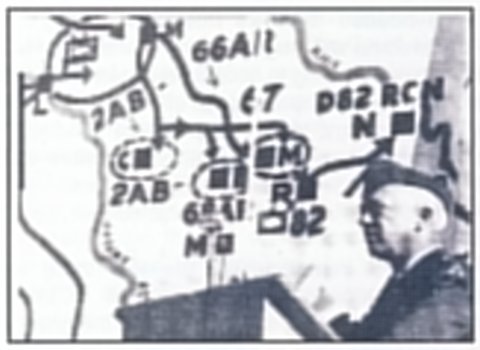
He was chosen to lead the first large-scale amphibious assault by the Allies - the successful American landings on the Atlantic coast of Morocco in November 1942. He was later tasked with rebuilding the US force" after their disastrous defeat at Kasserine. This was done with the same flair and energy as he used to train his great Third Army in 1944.
For twenty years, Patton's dream had been to become Commandant of Cadets at West Point; a hope never fulfilled. One of his last letters was written in September 1945 to Maxwell Taylor, Superintendent of the Military Academy, in a reply to a request for his views on revising the curriculum: 'I am convinced that nothing I learned in electricity or hydraulics or in higher mathematics or in drawing in any way contributed to my military career ... I am convinced that much more emphasis should be placed on history ... the purpose [of which] ... is to learn how human beings react when exposed to the danger of wounds or death, and how high-ranking individuals react when submitted to the onerous responsibility of conducting war. .. ' [to which one might well add - 'or peace']. He wrote fine and interesting poetry. He was a man of intellect and of drive even if he was brash - a shortcoming that, in October 1945, finally cost him his command of the 3rd Army.
GEORGI ZHUKOV
While the eyes of the West were fixed on the Nazi threat to Poland and on the signing by Molotov and Ribbentrop of the Russo-German Non-Aggression Pact, Georgi Zhukov was inflicting a devastating defeat on the Japanese Kwantung Army in Mongolia. This battle at Khalkhin Gol, fought from 20 to 30 August 1939, was one of the largest ground battles since the massive encounters of 1918 in Western Europe and was the largest tank battle in history. The Japanese lost 50 000 men.
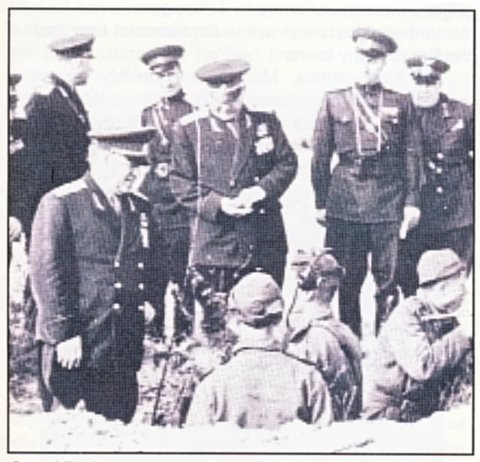
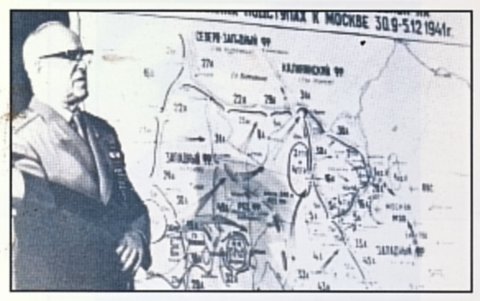
Zhukov achieved fame for his command of the historic defence of Moscow in 1941, the destruction of the German 6th Army at Stalingrad in December 1942, and the great victory at Kursk in 1943. Khalkhin Gol remained his most important achievement because it was there that he taught the Japanese a lesson they never forgot and thus made all the rest possible. Joseph Stalin said of him: 'He always wants more men, more cannon, more guns. Also more planes. He never has enough. But Zhukov has never lost a battle'.
As Marshal, four-time Hero of the Soviet Union, and Minister of Defence, he remained active in training to the end of his career. He always found time to speak to young people, often giving lectures to university students.
ERWIN ROMMEL
There exists a photograph of Rommel taken on the Western Front in 1915 holding his pet fox, presaging things to come. He first met Adolf Hitler in 1934, when he commanded the honour guard for the Fuhrer's visit to Goslar. In 1935 he was appointed to the Kriegsschule in Potsdam and, in 1937, published his book on tactics, Infanterie greift an (Infantry attacks) which became a bestseller. Rommel was an excellent artist and he drew all of the illustrations for his book, as well as the sketch maps for each of his tactical plans.
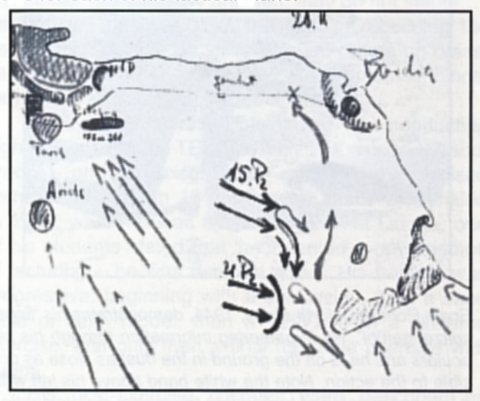
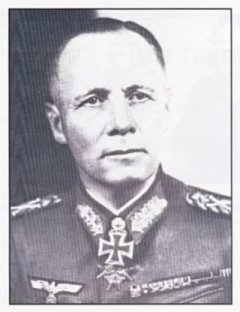
He was put in charge of Hitler's headquarters during the Polish campaign of 1939. His performance as commander of the Panzer 'Ghost' division in France in 1940 was outstanding. The division moved at 40 miles (64 km) per day. They captured a British convoy, complete with cigarettes, chocolates, canned fruit and even tennis rackets and golf clubs, followed, a few days later, by the entire British 51 st (Highland) Division and its commanding general. He would repeat this manoeuvre two years later at Tobruk. There exists a beautiful copy, in full colour, of the plan that he drew for the successful attack that led to the fall of Tobruk in 1942. He clearly revelled in Blitzkrieg, but he only became a household name once he had landed in Tripoli to take command of the Afrika Korps. Whereas George Patton once described his method of making war as 'getting there firstest [sic] with the mostest [sic]', in North Africa, Rommel did the most with the least. He was a man with 'Fingerspitzengefuhl'.
Rommel was always with his men in the thick of the action, leading from the front, often to the frustration and annoyance of his staff! He never asked anything of his troops that he personally could not do. In the end, his patriotism and loyalty to his men and his country cost him his life.
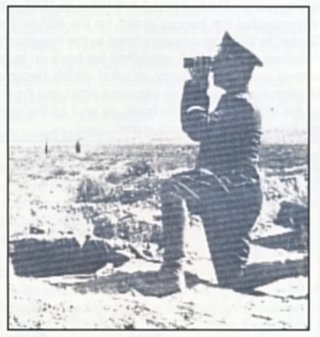
BERNARD MONTGOMERY
A good teacher is always master of his subject. Montgomery carried this to extremes in that he committed to memory the contents of the British Army doctrine manuals of the 1930s. This is not surprising, considering that he had, in 1930, personally rewritten the British Army's Infantry Training Manual. Montgomery has been described as 'pathologically obsessed' with being seen to be perfect. He was never popular, but was always acknowledged as extremely competent and an outstanding instructor (even if some considered him to be mad!) His professionalism was beyond doubt and his was the only division to be evacuated from Dunkirk with any sort of distinction. (Six months previously, he had set the division precisely this problem as a practical exercise). During 1940, he invented the word 'binge' when he insisted that every one of his troops 'must have 100% binge'. This mysterious term is a combination of 'drive', 'vooma', 'krag', 'paraat', 'vasbyt', 'get-up-and-go', and 'offensive spirit'. His large-scale ten-day exercise, 'Tiger', was revolutionary in defining the need for new doctrine and a change in the fundamental approach of the British Army to war.

Bernard Montgomery, properly dressed, uses a sand model and a pointer
at a strategic and tactical discussion for senior officers of all three services at Camberley
In North Africa, Montgomery quickly earned a reputation of omnipotence because he would descend upon a soldier and ask him what his duties were, appropriate to his rank. If dissatisfied with the answer given, he would immediately give the man a wordperfect rendition of the content of the relevant doctrine manual. Then he would return the next day and demand the correct answer from the soldier! Undoubtedly, this was a frightening experience, but the soldier never forgot that he had just met a real expert.
Montgomery understood the powerful combination of camera, newspaper and propaganda and used these to his advantage to revitalise the 8th Army. He had an excellent grasp of the importance of public relations and, typically, had made a careful and analytical study of the subject, even to the extent of writing a staff paper on the necessity of a commander wearing an unusual head-dress! He brushed shoulders with people of the highest status and even gave instruction to them.
In the end, the double tragedy of the humiliating defeat atArnhem and the death of his trusted aide, John Poston, in the last week of the war, was a shattering blow which left a scar from which he never really recovered.
His methods of command have been called ruthless and dictatorial and he has been described as an abrasive man with no social graces, but does this matter? He succeeded where everyone else before him had failed and he brought professionalism, pride and victory to his command. For the 8th Army in North Africa, he was the right man at the right place at the right time.
BILL SLIM
The name Slim invariably conjures up pictures of the 'forgotten' XIVth Army in Burma and the brutal but victorious struggles against the Japanese at Kohima and Impahl. In fact, Brigadier Slim was the first British commander to lead an offensive against Axis forces after the humiliation at Dunkirk, when he attacked the Italians at Gallabut, on the border between Ethiopia and the Sudan, in November 1940. The attack failed, but Bill Slim drew important lessons from it, discussing it in detail and describing the mistakes that he had made and the lessons that he had learned. He had taken counsel of his fears.
In March 1942, Slim was given the command of a corps in Burma and ultimately had to oversee the successful retreat of Burcorps to India. To fight a successful withdrawal under the conditions then prevailing was a remarkable achievement of both his generalship and the courage of the fighting men. This dreadful experience, together with the contemptuous treatment that his surviving troops received at Impahl, caused him to sit and ponder 'this business of morale'. He called it 'a state of mind ... , an intangible force ... ' that would move men 'to give their last ounce without counting the cost to themselves'. He concluded that there were three foundations to morale. Firstly, there was a spiritual foundation - there must be a great and noble object which must be achieved and in which all believed. Secondly, there was an intellectual one - the object must be attainable and, for this, the organisation must be efficient and the leaders competent. Thirdly, there was a material foundation - the equipment and working conditions must be as good as possible. These principles were the basis of Slim's command of the XIVth Army and of its success in defeating the Japanese. Yet, they should apply to every other organisation, large or small, that employs people, be it a soap factory, research laboratory or university.
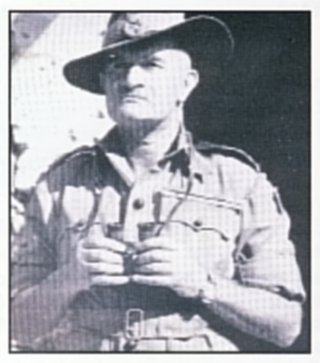
Techniques of instruction
All of the above-mentioned leaders served as instructors at some level and, when they taught, they did it 'right'. They ensured that, firstly, the material (doctrine) was correct and, secondly, that the method was appropriate to the topic and occasion. This can be seen clearly in the photographs of Patton and Zhukov, where the teaching aids selected are suitable for the purpose: The map is large enough to be read and the teacher is appropriately dressed - in formal dress for a formal occasion, in battle dress in the field. For Bill Slim, safari suit, slouch hat and field glasses were normal working dress, simple and practical. An instructor is judged according to dress and behaviour. Slim and Patton were quite explicit on the matter of discipline and dress: 'If the men are well turned out and salute briskly, that unit is efficient'. Before the defeat at Kasserine, Patton had remarked: 'the soldiers are sloppily dressed, they do not salute ... '. Later, when he was given the task of rebuilding the defeated US forces, he said: 'I issued orders on dress, saluting, etc. If men do not obey orders in small things, they are incapable of being led in battle'.
Montgomery was outstanding in conducting high-level seminars, TEWTs (Tactical Exercise Without Troops) and exercises. He completely revitalised training in Britain in 1940 after the fiasco of Dunkirk. In 1934, when he was Chief Instructor at Quetta, one of his students stated that 'he invented a new method of lecturing - he was damned good'. His training was progressive, beginning with a discussion, then a sand table or cloth model, then a TEWT, then a skeleton exercise, and only then a final full-scale exercise with troops.
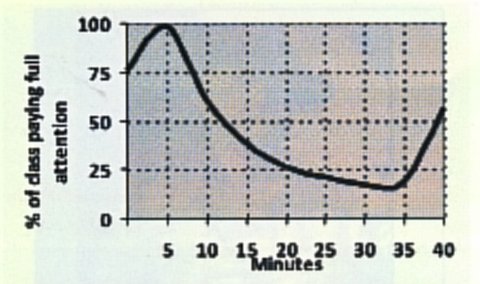
His post-exercise critiques were described as electrifying experiences in learning. While he was CIGS he insisted that the manual of training methods be revised. The result was The Principles and Practice of Good Instruction, Parts 1 and 2, which were published in 1947. These are a gold-mine of useful advice and they warn against most of the shortcomings that are seen every day in so many of university lecture theatres today. It might surprise readers to know that the didactical level of this 1947-issue manual is 'tertiary' and that the methodology is at least as good as that taught in a typical teacher training course. For example, there are well-defined sections on the lecture, the demonstration, the tutorial, and the group discussion, and each section discusses in detail under which conditions each method is most appropriate. All emphasise the importance of having a lesson plan, of knowing where you are going and how you will get there. There is an excellent section about the variation of the attentiveness of a class as the lecture proceeds, which includes a graph which was rediscovered 25 years later by university academics and appears in a book hailed as an exciting new discovery in educational research!
Immediately after the Second World War, Slim became Director of the Imperial Defence College (IDC), which, in effect, is a university for post-graduates. The atmosphere was relaxed, but stimulating, just as it had been at Camberley in 1935 where he had been an instructor described as 'one of the best. He tackled every subject in a down-to-earth way ... and with humour'. Slim showed the importance of making mistakes and learning from them.
Self-discipline, Self-motivation
How hard did each man drive himself?
Rommel wore himself out within two years of leading the desert campaign, no doubt from a combination of the stress of continuously driving himself, leading from the front and eating food lacking in essential vitamins and trace minerals.
In Sicily, Patton slapped two soldiers and came close to being court-martialled. Why? Because he was himself suffering from battle fatigue. He was badly deprived of sleep, having driven himself to a state of exhaustion as he relentlessly pushed the 7th Army forward over a fortnight. He drove himself because he loved war, knew how good he was, and wanted to prove to all that he could succeed - and he feared that it would all be over before he had fulfilled his 'destiny'.
Montgomery always had himself under 'control'. He went to sleep early, ate regularly, and always kept a strict regimen. He understood well the consequences of fatigue, based on his experiences in the infantry during the First World War. He left the stress of sleepless nights and breakdown to his Chief of Staff, Francis de Guingand. It was Montgomery's supreme self-confidence that guaranteed his sleep.
Slim made a careful analysis of the causes of the British defeat in Malaya and Burma, decided what needed to be done to cure the problems, and steadfastly carried out his plan. Despite the stress, which must have been immense, he always looks cheerful, relaxed and fit, knowing that everyone had done their best for the army and the men and that it was a good job, well done. There was unity in adversity in the 'forgotten' XIVth Army.
Zhukov's drive and ability to cope with stress was unsurpassed. From the days of Khalkhin Gol in August 1939, through the horrendous struggles at Moscow, Stalingrad and Kursk, he must have experienced enormous pressure. For six years he carried the military responsibility for preventing the annihilation of Mother Russia, while simultaneously having to cope with Joseph Stalin, a formidable and dangerous task where the punishment for a mistake was almost certain execution. Somehow he survived.
Interaction
Did these five 'teachers' ever meet, perhaps at some international conference on the improvement of teaching methods? Regrettably, they did not. However, photographs show that some of them met, and that they seemed to have enjoyed the experience; but on those exalted occasions there was little chance of chatting about methods of instruction! Only Rommel never met any of the others; but we do know that his book was avidly read by Patton, who once consoled himself by reading a section about an attack through mud: 'I woke up at 0300 hrs; it was raining very hard. I tried to go to sleep, but finding it impossible, got up and started to read Rommel's book, Infantry Attacks. By chance I turned to a chapter describing a fight in the rain in September, 1914. This was very reassuring because I felt that if the Germans could do it I could, so I went to sleep. I was awakened by the artillery. The rair had stopped and the stars were out. I even had a slight feeling of sympathy for the Germans, who must now have known that the attack they had been fearing had at last arrived. I had not taken counsel of my fears'. In a sense, Montgomery and Rommel met at El Alamein. Almost fifty years after the battle, on 18 October 1992, their sons met and were photographed together in Westminster Abbey on Alamein Day.
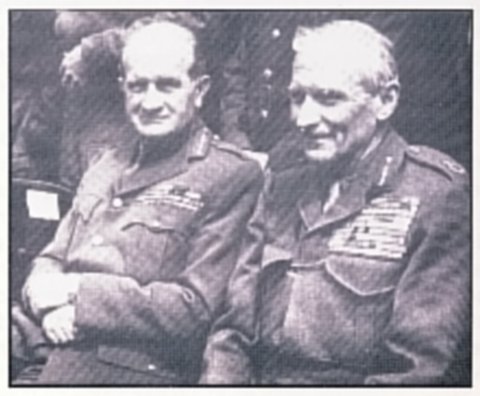
Of the five great military leaders, only one had been a school teacher by profession. This was Bill Slim, who for two years, from 1910 to 1911, had taught in an elementary school in the slums of Birmingham, before becoming a professional soldier. It is ironic that, for the only professional teacher of his group, there is no photograph of him giving a formal lesson! Slim and Montgomery met many times professionally while the former was Director of the IDC and the latter, CIGS, and Slim subsequently became CIGS when Montgomery completed his term in 1948.
What, if anything, did these five men personally have in common? Other than their ability as great commanders on the ground and as great teachers, very little. Patton and Zhukov, politically poles apart, had both been in the cavalry. Both loved horses and were at home on them. Patton, a wealthy man, even owned a string of polo ponies. He was an excellent horseman and played polo and indulged in steeple-chasing, fox hunting and flat racing. In spite of this, only Zhukov actually rode a horse in battle (at Khalkhin Gol, in 1939). In describing Zhukov at the Victory Parade in Berlin in September 1945, Patton said: 'He is short, rather fat and has a prehensile chin, like an ape, but good blue eyes. He was in the cavalry'. This was praise indeed. Zhukov led the great Russian Victory Parade through Red Square on a magnificent white charger.
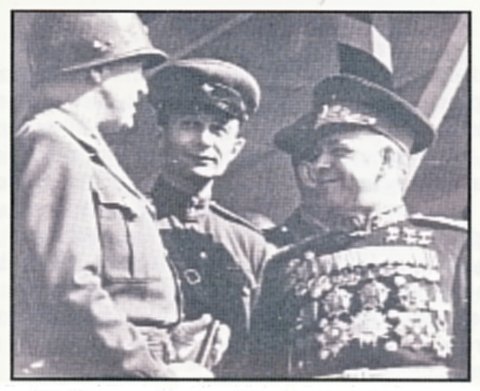
Patton met Montgomery on many occasions during the War - in Tunis, in Sicily, and in Normandy. His opinion changed from: 'very alert, wonderfully conceited, and the best soldier - or so it seems - I have met in this war' at their first encounter in Tripoli, through: 'Monty is trying to steal the show' in Sicily, to: 'I have a much better impression of Monty than I had' just before D-Day; and finally, during the Battle of the Bulge: 'Monty is a tired little fart'.
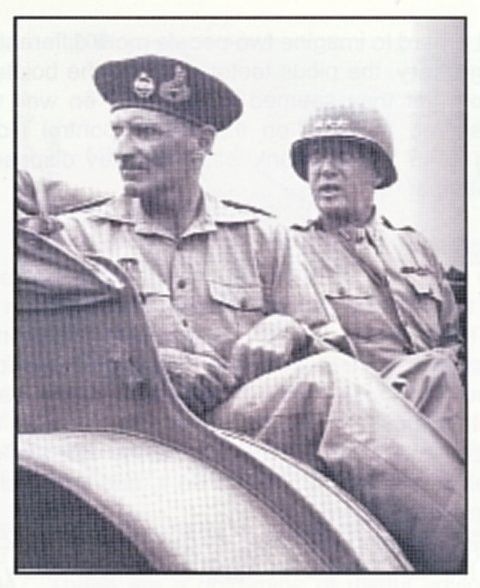
It is hard to imagine two people more different than Montgomery, the pious teetotaller, and the boisterous Zhukov; yet they seemed to have got on well when they served together on the Berlin Control Council during 1945. Monty drank water, Zhukov disposed of the champagne.
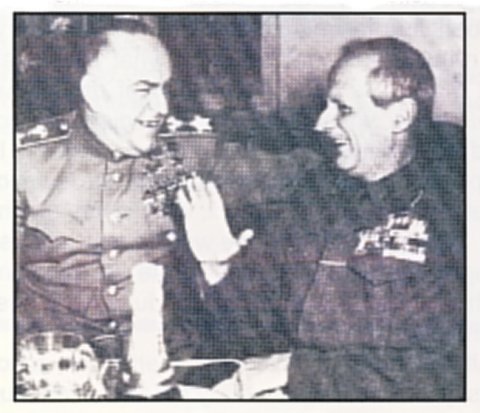
Publications
A true scientist publishes the results of his studies. All five of the featured commanders left their legacy in print:
There is no known photograph of Rommel instructing, but he is unique in having written a formal textbook for his students in the infantry officer training school, Infanterie greift an, which was read by other generals, and is still being studied today. The book tells the soldier what to do, how to do it, and why it should be done thus.
George Patton's book, War as I knew it, describes what his armies did in northern Africa, Sicily and western Europe. It is a rather sanitized presentation, but contains pearls such as his famous prayer for God to grant fair weather for battle. His diaries, published thirty years later, are far spicier and therefore contain more valuable lessons for teachers.
Slim wrote two wonderful books. Through both shine his honesty and willingness to discuss the errors that he made, and how he went about learning from these experiences so that next time he would 'get it right'. For him writing was relaxation. Once, at the height of a major battle during the Burma campaign, a junior officer came into his headquarters to find him correcting proofs of an article that he had written for a British newspaper! His comment was: 'I have done all that I can (as general) and must now sit back. I would love to be out there with them, but that is not my job'! He could not have been more relaxed and confident. He knew how to handle people and problems. No wonder his XIVth Army headquarters had an atmosphere of friendliness and cooperation. He taught by example. Everything one needs to know is in those two books.
Montgomery wrote a three-part series, as well as his Memoirs. He consistently presents an illusion of errorless perfection, so the reader is not able to learn much from his experiences in battle. Fortunately, the notes for the pre-exercise briefings and the post-mortem assessments of his divisional exercises of 1941, Binge and Tiger, exist and these have been published in part.
They contain a wealth of information and, by listing the shortcomings and what needs to be done, here are the valuable lessons to be learned. Georgi Zhukov's 'autobiography' is (for historical and political reasons) dry and ponderous. It is from the photographs that the real man springs out - a man equally at home on a tatty Mongolian pony in 1939, and on the magnificent white charger proudly leading the Victory Parade in Red Square in 1945; in white dress uniform at the height of his power, sitting at a table at the Potsdam Conference near Berlin in 1945; kneedeep in a muddy trench with the troops in 1955. It is quite obvious that, even in old age, Zhukov thoroughly enjoyed training his troops. He was proud of his men.
Lessons for today's teachers
The writer remembers an army brigadier who was running a course on better methods of instruction. He had set a group the task of giving a lesson with the aid of a model. They chose the topic, they built the model. The model was good, and correctly labelled. The group was seat~d around it in a U-formation. The instructor had a pointer, and his didactics were faultless. After two minutes, the brigadier tore off his beret, hurled it to the ground, and shouted: 'Stop! I don't care a damn how good your teaching aids are, I will not allow you to teach rubbish. And that is exactly what you have been doing! If you are going to be one of my instructors, you will know your stuff.' The brigadier was correct: all had been contrary to the Doctrine Manual. It was an important lesson: No matter what the subject, the teacher must know the subject, what to say and how to say it. When asked how one would know what should be taught, the brigadier said: 'State the problem and from this you will automatically deduce what needs to be learned'.
All teachers of science, whether at school or university, have a responsibility to teach their students at least as technically well as these professional
soldiers trained their men. The appropriate use·of voice amplifiers, slides, overhead projectors, diagrams and charts, pointers, textbooks and handouts will enhance the teaching process. Teachers also need to consider whether the content of the course is useful and current. Do they practise the important things and require students to repeat the exercise until they get it right? Do they allow students to learn from their errors? Do they use discussion groups in class or have team projects? If not, why not? If soldiers fifty years ago could do it, there is no excuse for the 'educationists' of today not doing a professionally correct job of teaching.
A last anecdote
This anecdote about Bill Slim illustrates, firstly, his interest in training (even when Field Marshal, CIGS) and his humanity. It is a true story:
Slim was driving back to the base late on a Sunday night, when he saw a soldier plodding up the road. He ordered the driver to stop the car. The soldier, who was on a course, had been home to visit his parents, had caught the late train back, and the last bus to the base had gone. 'Get in,' Slim told him, 'From now on, my driver will pick you up at the station at this time every Sunday night until the course is over.' They returned to the base - a Field Marshal and other rank, driven by the same driver.
The young soldier completed the course and received his first stripe, lance corporal. After the passing out parade, Slim and his driver appeared and called the new lance corporal over. It was late, after licensing hours, illegal for pubs to serve drinks (officers, NCO's and other ranks could not drink together in the Service Bar at the base). Slim turned to his driver and asked: 'Which pub is open?' The driver, a sergeant, drove to a pub with Slim, his ADC, and the lance corporal. Slim bought the first round, the driver bought the second, and Slim bought the third round, the ADC not being allowed to buy, and then the new lance corporal bought a round. They all went back to base, rather cheerful.
This tale emphasises not only Slim's magnanimous character but also one of the most often overlooked attributes of a great teacher: compassion for the students. A true teacher likes and respects his students. He must know their abilities and their weaknesses, who can be helped when they come for help, who has tried and who has not. He must provide encouragement and hope to those who need it. He must reward their efforts and show pleasure and pride in their achievements. A good teacher must also punish. He must fail students who do not meet his criteria of competence. It is his moral obligation to turn back those who do not meet the standard, no matter how much he may like the student. He needs to have the courage to know when to advise those with no chance of success to change course and this requires that he recognizes those trying to push their luck (and their teacher/trainer) for a few extra marks.
Conclusion
How does one ultimately judge the greatness of a man: Through biographies published, statues erected, films made about him? There are films made about two of the generals featured in this article: Patton and The Desert Fox. There are statues of Montgomery and Slim outside the Ministry of Defence in London, so very different from each other in character! There is one to Patton in Luxemburg in typical pose: in battle dress, feet apart, binoculars in his hands, with that look of drive. (The statue of Slim is remarkably similar, with chin jutting forward. Both sculptors accurately caught the character of their man). The great statue of Zhukov near his birthplace is so stylized as to lose all feeling for him. There is no statue to Rommel.
So how should we judge these men? In the end we remember a teacher for what we learn from him. All of these men were great teachers. They succeeded because they were experts and could communicate both information and enthusiasm to their students. They imparted ideas and inspiration.
Acknowledgments
The writer must acknowledge his friends, Allan, Kevin and Dawie who really understood what it was all about, and who educated him.
Bibliography
LT GEN GEORGE PATTON:
Ayer, Fred, Before The Colors Fade (Houghton Mifflin, Boston, 1964).
Blumenson, Martin, The Patton papers: 1885-1940 (Houghton Mifflin, Boston, 1972).
Blumenson, Martin, The Patton papers: 1940-1945 (Houghton Mifflin, Boston, 1974).
Nye, Roger H, The Patton Mind (Avery, New York, 1993).
Patton, G, War as I knew it (Houghton Mifflin, Boston, 1947).
Semmes, Harry H, Portrait of Patton (Appleton-Century-Crofts, New York, 1955).
Patton, Film in colour, portrayed by George C Scott, 20th Century Fox, 1969.
MARSHAL GEORGI ZHUKOV:
Chaney, O P, Jr, Zhukov (David & Charles, Newton Abbot,1972)
Memoirs of Marshal Zhukov (Jonathan Cape, London, 1971)
In original Russian:
Marshal Zhukov - As we remember him (Politizdat, Moscow, 1988), nine contributors.
Zhukov, G K, Reminiscences and reflection in two volumes (Novosti, Moscow, 1975).
FIELD MARSHAL BERNARD MONTGOMERY:
Chalfont, Alun, Montgomery of Alamein (Weidenfeld and Nicholson, London, 1976).
Hamilton, Nigel, Monty, The Man Behind The Legend (Lennard, London, 1987).
Hamilton, Nigel, Monty, The making of a general, 1887-1942 (Hamish Hamilton, London, 1981).
Hamilton, Nigel, Monty, Master of the battlefield, 1942-1944 (Hamish Hamilton, London, 1983).
Hamilton, Nigel, Monty, The field marshal, 1944-1976 (Hamish Hamilton, London, 1986).
The Memoirs of Field Marshal Montgomery (Collins, London, 1958).
E Alamein to the River Sangro (Hutchinson, London, 1947; Corgi, London, 1974).
Normandy to the Baltic - Invasion (Hutchinson, London, 1947; Corgi, London, 1974).
Normandy to the Baltic - Victory (Hutchinson, London, 1947; Corgi, London, 1974).
FIELD MARSHAL ERWIN ROMMEL:
Douglas-Home, Charles, Rommel (Weidenfeld and Nicholson, London, 1973).
Irving, David, The Trail of the Fox (Weidenfeld and Nicholson, London, 1977).
Liddell Hart, B H (ed), The Rommel papers (Collins, London, 1953).
Rommel, E, Infanterie greift an (Ludwig Voggenreiter Verlag, Potsdam, 1937).
Available in English as Infantry Attacks (Presidio Press, California, 1990) and Attacks (Athena Press, Virginia, 1979).
Rutherford, Ward, Rommel (Bison Books, London, 1981).
The Desert Fox, Film in black and white, portrayed by James Mason, 20th Century Fox, 1951.
FIELD MARSHAL BILL SLIM:
Evans, Geoffrey, Slim as Military Commander (Batsford, London, 1969).
Lewin, Ronald, Slim - The Standard Bearer (Leo Cooper, London, 1976).
Slim, Defeat Into Victory (Cassell, 1956; Corgi Books, London, 1971 ).
Slim, Unofficial History (Cassell, 1959; Corgi Books, London, 1970).
OTHER SOURCES:
Bligh, Donald A, What's the use of lectures? (Penguin Books, London, 1972).
Faraday, Michael, and Bragg, Lawrence, Advice to Lecturers (The Royal Institution, London, 1974).
'I was there', 'Rommel and Montgomery meet again' in Sunday Tribune, 18 October 1992, p 21.
Roberts, Wess, Leadership secrets of Attila the Hun (Bantam Books, London, 1990), Chapter 7: 'Chieftains are as they appear to their Huns', especially p 53.
Sun Tsu, The art of war (translation by Samuel B Griffith) (Oxford University Press,London, 1963, 1971. 'A general must be serene and self-controlled' p 136).
The Principles and Practice of Good Instruction for Officer and NCO Instructors (War Office, London, February 1947) WO Code No 8162.
Return to Journal Index OR Society's Home page
South African Military History Society / scribe@samilitaryhistory.org